Although ecommerce is on the rise, many business owners still need to decide whether it fits with their business model or what it would entail to make the transition.
Make sure ecommerce will work for you before getting started due to the intense competition, cybersecurity worries, and uncertainty as to whether your current level of customer service will remain relevant.
And if your company is getting off the ground, it’s critical to understand the fundamental categories of ecommerce business models and how they function online. This knowledge will aid you in making certain fundamental business decisions early on.
WHAT IS E-COMMERCE?
In actuality, e-commerce represents the future of all company models. Understanding how it complements yours most effectively can help you continue outperforming the competition and sustainably drive growth.
Ecommerce is a business concept that allows buyers and sellers to conduct business online.
There are many different ecommerce business model options available, and it’s now simpler than ever for innovative founders to use them to bring their ideas to life.
You must understand what business model works best for you and how to use that to achieve better success if you want to innovate, defy expectations, and set your company apart from all others online.
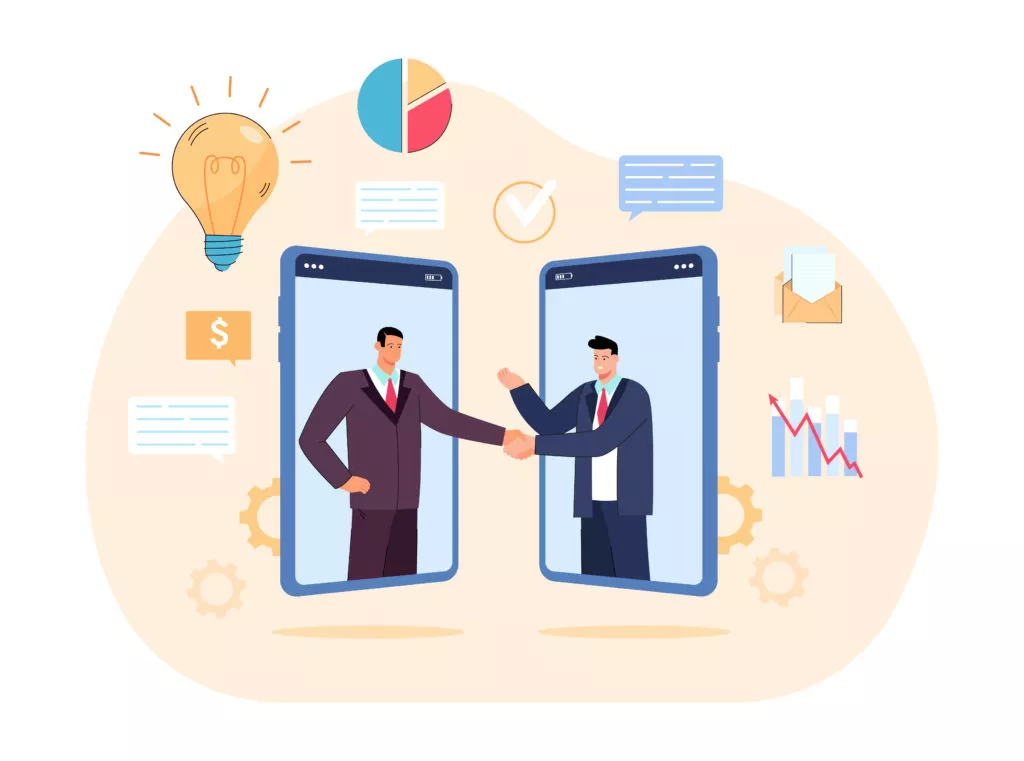
Ecommerce Business Models That Are Most Frequently Used
These four categories apply to you if you’re beginning an online store. Many businesses simultaneously operate in several, each with its advantages and difficulties.
You may think creatively about your opportunities and risks by knowing which category your concept belongs to. Nestify helps position your company for optimum potential regardless of its growth stage or business strategy. Request a demo from sales if you’re interested in learning more.
B2C (Business-to-consumer)
B2C companies conduct direct sales to consumers. Anything you purchase as a customer, from clothing and home goods to entertainment, is part of a B2C transaction.
Compared to a business-to-business (B2B) purchase, the decision-making process for a B2C purchase is substantially quicker, especially for lower-priced commodities.
Because of this shortened sales cycle, B2C companies often invest less in marketing to close a deal while having lower average order values and fewer repeat businesses than their B2B competitors.
B2C ecommerce business models also encompass products and services. To promote directly to their clients and improve their lives, B2C innovators have used technologies like mobile applications, native advertising, and retargeting.
B2B (Business-to-business)
The company sells its product or service to another company in a B2B business model. Sometimes the buyer is the final consumer, but this only happens sometimes. B2B transactions often have a longer sales cycle but greater order values and more repeat business.
By using ecommerce storefronts in place of catalogs and order forms and better targeting in niche markets, recent B2B entrepreneurs have carved out a space for themselves.
Millennials made up 60% of B2B buyers in 2021, almost twice as many as in 2012.
Online B2B selling is increasingly significant as younger generations enter the age of commercial transactions.
B2B2C (Business-to-business-to-consumer)
Business-to-Business-to-Consumer, or B2B2C, is the acronym.
A company’s product or service is sold to customers through a partnership with another organization under this business model.
The end user is aware that they are purchasing a good or using a service from the original company, as opposed to when a product is white labeled, where a business rebrands something to market it as its own.
B2G (Business-to-government)
Business-to-government (B2G) is an e-commerce model in which a company sells and distributes its products to governmental organizations or public administrations, whether municipal, county, state, or federal. The winning of government contract bids is essential to this approach.
B2G differentiates itself from other companies or customers despite being a more secure business approach. The bureaucratic nature of government organizations frequently results in a significantly slower speed, which might restrict possible revenue streams.
C2B (Consumer-to-business)
People can offer products and services to businesses through C2B firms.
With this e-commerce approach, users post the job they need to be done, and request quotes from businesses via a website.C2B services would also include affiliate marketing.
Pricing for goods and services is where the C2B ecommerce model excels. With this strategy, customers can set pricing or demand direct competition from businesses to satisfy their requirements. Innovators in the recent past have ingeniously linked businesses with social media influencers to advertise their products.
D2C (Direct-to-consumer)
Without the aid of internet merchants or other distributors, a direct-to-consumer business sells its product to its final clients. There is no intermediary between the customer and a business, in contrast to other business models like B2B2C.
C2C (Consumer-to-consumer)
C2C ecommerce companies, often known as online marketplaces, link customers to trade goods and services. These companies typically make money by collecting transaction or listing fees.
C2C firms profit from the growth that enthusiastic customers and sellers drive, but quality control and technological upkeep are two major challenges. Companies like Craigslist, Walmart, Alibaba, and eBay invented this strategy in the early days of the internet.
Innovation in Value Delivery Methods for Ecommerce
The way a product is created to give the maximum value to users is known as a value delivery approach. If your company model resembles a car, the engine is how you give value to customers.
Here are some of the most prominent delivery strategies used by market disruptors and industry leaders:
Dropshipping
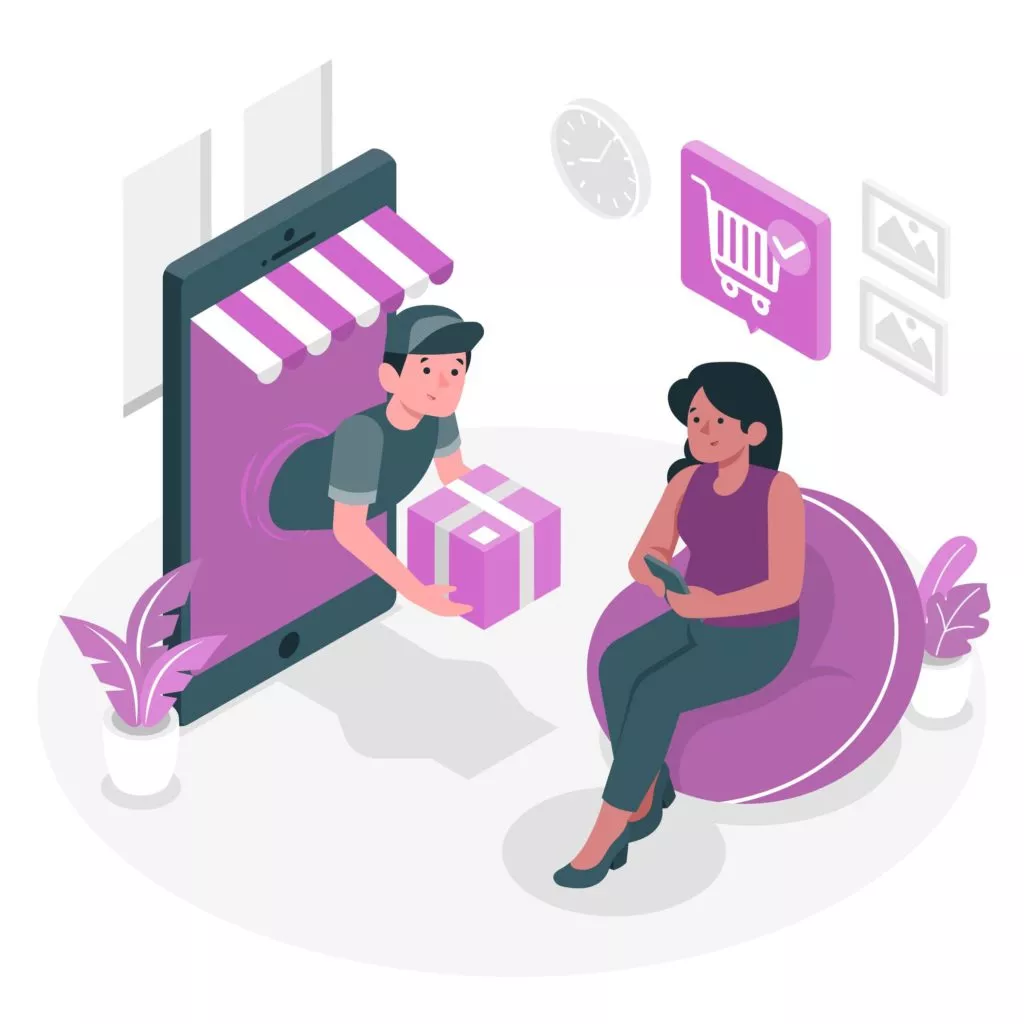
The least expensive way to launch a new company is, by far, dropshipping. It draws people who are less concerned with margins and prefer to keep startup costs as low as possible. Dropshipping is a great ecommerce business model for someone who wants to avoid keeping and managing inventory.
Pros
- Low starting costs: Dropshipping’s low startup costs are its greatest benefit. Inventory costs, typically the largest expense for a new ecommerce business, are nonexistent because you never carry inventory.
- Low Risk: You aren’t taking the chance of holding goods you can’t sell because you don’t buy your inventory upfront.
- Effective Sales: The picking, packing, and shipping of your product will be handled for you by dropshipping suppliers. You can run your business from anywhere in the world with the convenience and effectiveness of the drop ship option.
Cons
- Fierce competition: You can bet that many people use dropshipping because there are so few barriers to entry. The intense competition makes it challenging to stand out from the crowd.
- Narrow margins: You will need to rely more on developing content, services, etc. because low margins make competing with paid advertising space challenging. Low margins also require high sales volumes to generate a respectable profit.
- Syncing of inventory (backorders): Because you depend on someone else’s merchandise, there may be times when the wholesaler receives a shipment request, but the item is out of stock. This out-of-the-ordinary delivery delay could harm the retailer’s reputation.
Labeling
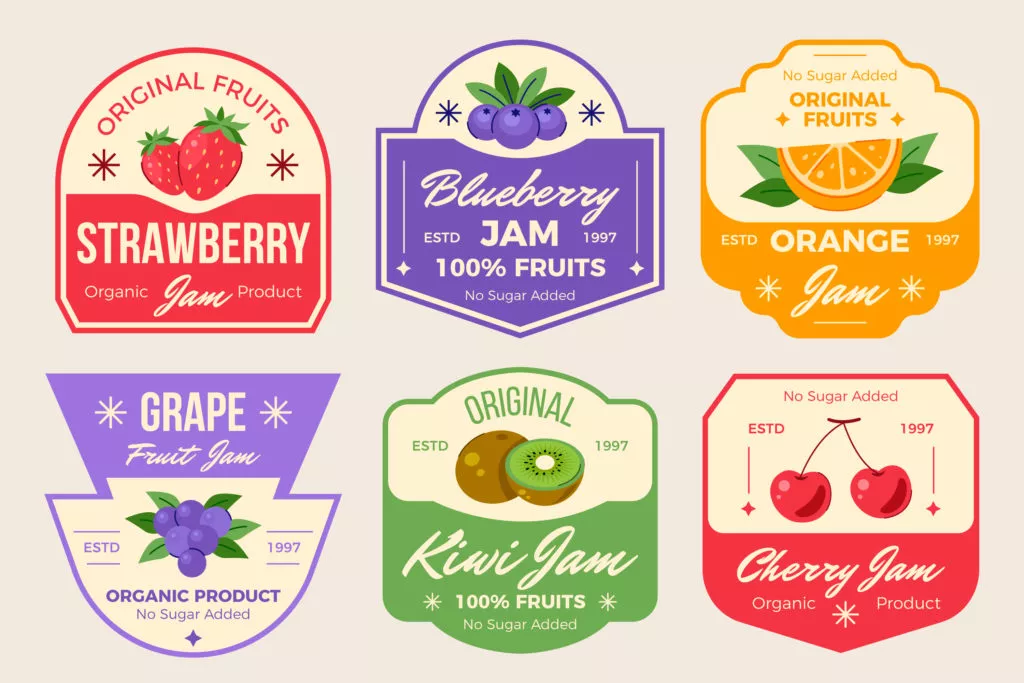
For many hobbyists, making their products is a common strategy, and making new products yourself gives you precise control over quality and your brand. Still, it has drawbacks regarding constraints, time, and scalability, whether jewelry, clothing or natural beauty products.
This choice is for those who prefer to do things independently, have original ideas, are physically capable of producing the goods, and have the necessary resources.
Making your products is also an option for those who want to control every aspect of the brand and product quality while minimizing startup inventory costs.
Pros
- Minimal startup costs: Making your products saves you from having to purchase a large quantity of inventory upfront as you would if you had them manufactured. As a result, you can benefit from relatively low production costs, that for many ecommerce businesses account for most of their startup costs.
- Brand control: Making your goods allows you to establish any brand you like.
- Cost restraint: The power to set your prices for your products goes hand in hand with brand control.
- Quality control: Making your products gives you complete quality control, allowing you to meet your and your customer’s demands.
- Agility: Making your products can give you the highest level of business agility because you can change the quality, the features, or even the entire product at any time.
Cons
- Costly: Making your products can take time, depending on your chosen product, leaving you with less time to concentrate on developing your company.
- Scalability: When your business succeeds, production issues may arise. Although you can look to a manufacturer for assistance as you scale up, this may be complex and possible if your customers have grown accustomed to expecting handmade goods from you.
- Fewer available products: As was already mentioned, your abilities and the resources at your disposal constrain your options for potential products.
- The success of a maker: Old World Kitchen started as a family-run company selling door-to-door in its neighborhood. During a time of expansion, using Etsy was the wisest choice for establishing the company’s online presence.
Manufacturing
Manufacturing your product can benefit those with an original idea or a creative twist on an existing concept. It’s also for those who have established a market for their item and are reasonably certain it will sell. This is crucial because the biggest upfront financial investment will be needed for manufacturing.
One producer produces a white-label item distributed to numerous retailers under their brand names, and they are generic goods that you can market to various customer segments.
Pros
- Lowest price per unit: It is common for manufacturing to achieve the lowest cost per unit, giving you the highest margins for your product.
- Brand control: When you have your product manufactured, you are free to create your brand around it and are not limited by those of others.
- Cost restraint: Setting your prices for your goods comes with the power to create your brand.
- Quality control: When you produce your product, instead of dropshipping or buying in bulk, you have more control over the final product’s quality.
Cons
- Minimum order amounts: Initial orders often come with high startup costs. Your inventory investment could easily be tens of thousands of dollars, depending on the price of the product and the manufacturer.
- The issue with the manufacturers: Being duped by a foreign manufacturer will stop your business like nothing else. Prototyping, sampling, fine-tuning, and production are often lengthy processes in manufacturing.
- Margins: Your margins can change significantly when you manufacture your product depending on the specific product, the manufacturer, and the order quantity.
Wholesale
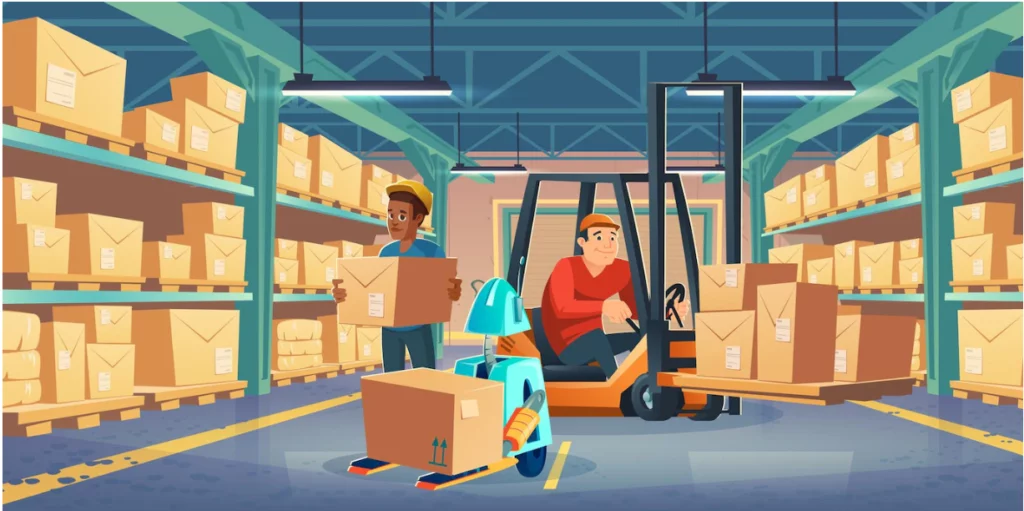
If you want to start selling goods right away or if you want to sell a range of goods and brands, buying wholesale is a good choice. Due to the large number of products that are available for wholesale, wholesaling offers a wide range of opportunities.
Pros
- Selling reputable goods: Wholesale purchases usually involve less risk. You don’t risk wasting time and money creating a product no one will buy because you’re working with brands that have already been proven on the market.
- Brand acculturation: Selling well-known brands can position your company by evoking an aura around your brand.
Cons
- Product distinction: Selling established products has both advantages and disadvantages. You must to work extra hard to stand out from the competition and persuade prospective customers to buy from you because various retailers sell the products.
- Cost restraint: You must follow their rules to some extent if you sell other brands. Some companies will impose price controls to stop you from discounting their products.
- Inventory Management: There will probably be a minimum order requirement for each product when buying in bulk. The minimum order will vary depending on the product and manufacturer, but you must keep inventory and manage it to place subsequent orders.
- Managing supply partners: Dealing with numerous suppliers can be challenging if you carry a wide range of products.
- Risk still exists when buying in bulk: Inventory must be purchased for wholesale sales even though visibility is not guaranteed. Finding a way to be distinguishable from the many other retailers selling the same items poses the most considerable risk.
On-demand printing
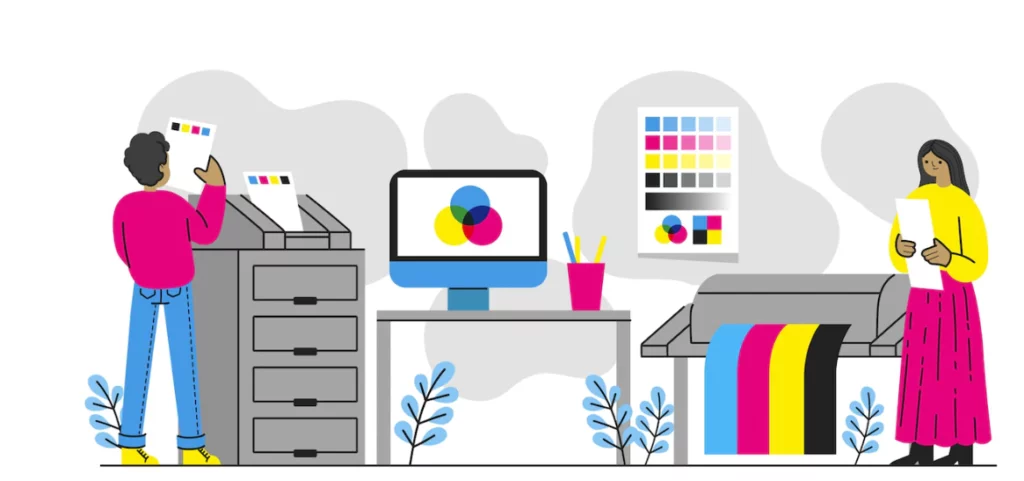
Print-on-demand is a way to market products with your designs that are made to order. When a customer orders a product with your design, you create the design; a third-party printing service then creates, packs, and ships the order.
This model lowers the entry-level cost of online selling, much like dropshipping. Little upfront investment is required because you only have to pay for a product once you make a sale.
This allows you to free up money for your marketing and advertising strategies. Your printing partner handles printing, packing, and shipping when using print-on-demand.
You may market items like:
- Duffle bags
- Yoga pants
- face mask
- Band watches
- Printed canvas and posters
- Pillows toss
- Blankets
Depending on your pricing strategy and customer acquisition spends, on-demand products typically have smaller profit margins.
However, it’s a good low-risk business model for those new to online shopping or wanting to test new revenue streams for their company.
Pros
- Quickly produce products: Once the design is finished, you can quickly manufacture the item and list it for sale in your online store.
- Shipped automatically: Your supplier is in charge of shipping and fulfillment. All you can do is deliver excellent customer service after the sale.
- Lower initial expense: Since you don’t keep any inventory, it’s simple to add and remove items, try out new business concepts, and develop items for specialized markets.
Cons
- Less ability to control shipping: Since they frequently differ for various products, shipping costs can become complicated.
- If you want to design an exceptional unboxing experience, your options might be limited.
- Limited customizability: The product and the vendor will determine what you can customize. You must consider base costs, printing processes, and available sizes when selecting which products to customize.
Digital Goods
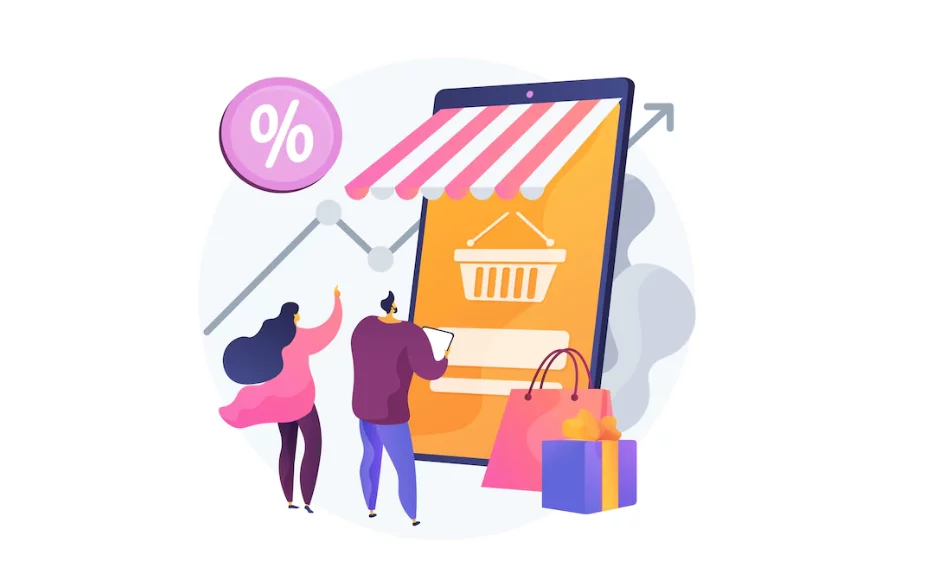
Digital products are a nonphysical asset or media that can be repeatedly sold and distributed online without replenishing inventory. Digital files that can be downloaded, streamed, or transferred, like MP3s, PDFs, NFTs, videos, plug-ins, and templates, are frequently used to create these products.
Digital products can have high up-front costs, but their variable costs are typically quite low. It is incredibly inexpensive to deliver an asset to customers once it has been made.
Pros
- Lower overhead expenses: You don’t keep any inventory or accrue shipping costs.
- Scalability: Instant delivery of orders enables you to delegate fulfillment. You can quickly automate tasks to save time as your business expands.
- Large selection of products: You can choose from several options, including a freemium model where you offer products with upgradeable features for a fee, a monthly fee for access to premium content, or licenses to use your digital products. Digital goods can be the focus of a separate business or added to an existing one.
- Excellent prospects for the future: With e-learning, an industry predicted to be worth $374 billion by 2026, you have a fantastic opportunity to expand your company and make a difference.
Cons
- Fierce competition: Your digital products’ competitors likely offer free alternatives. To succeed, you’ll need to take into account the niche you choose, provide top-notch products, and understand how to develop your brand.
- Stealing and piracy: You risk customers stealing and repurposing your goods.
- Restrictions on sales: For instance, Facebook and Instagram’s commerce guidelines state that you can only sell physical goods through those platforms.
Subscription
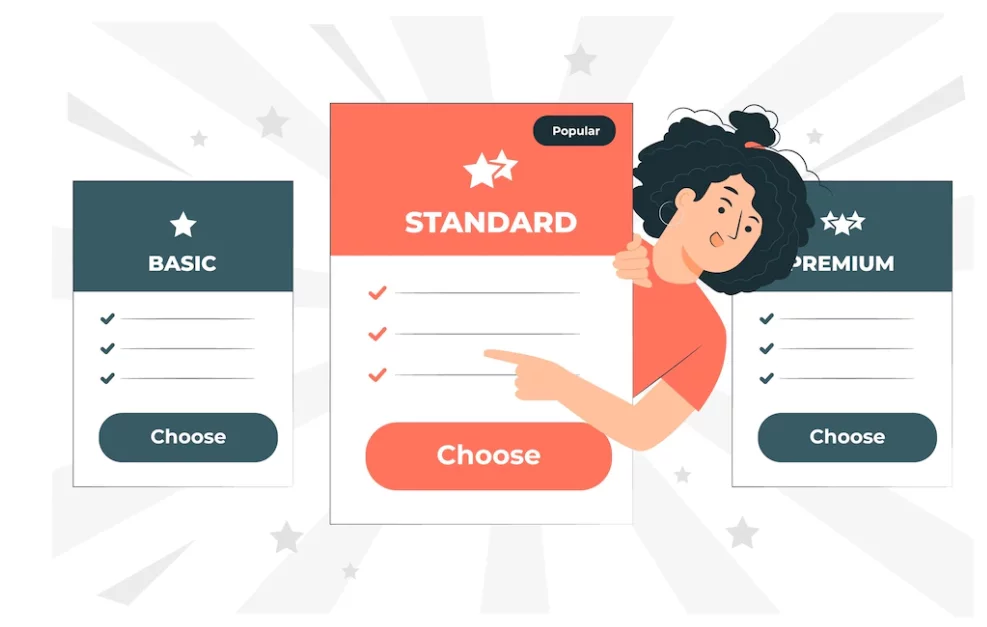
A subscription based business model charges customers a recurring fee to access a good or service, typically monthly or annually. Businesses can profit from ongoing client relationships by using subscription models.
They will continue to pay your fee as long as they believe your offer to be valuable. The longer customers use the product or service through a subscription membership, the more valuable it becomes to them.
No matter if you’re an online retailer or a teacher, you can launch a subscription business in a variety of sectors, including:
streaming offerings
- Boxes sent to you every month
- Communities with membership
- Providing meals
Pros
- Predictable income: You can forecast sales, organize inventory, and determine how much to reinvest in your company’s expansion using monthly recurring revenue.
- Money on hand is more: Receiving monthly payments in advance means more cash flow (and peace of mind) for your startup.
- Faithful clients: Regular purchases give you a better understanding of consumer behavior, allowing you to improve your products and draw in new customers continually.
- Cross-selling and upselling opportunities: Customers develop more trust in you due to their continued use of your products. Because they already know your value, it is simpler to sell them additional products.
Cons
- Risk of churn is high: Churn is a problem with the subscription business model. To continue receiving payment from clients, you must maintain their interest and engagement.
- Variety of goods: To keep a subscription business running, products must be kept fresh. Every month, Netflix changes the titles available. Trunk Club pledges to make ongoing investments in your evolving fashion tastes.
- Big problems from little ones: Most subscription services deliver the same item to customers at the same time each month. While it may seem straightforward, if there is even a minor glitch in your system, it can quickly escalate into a major issue if you don’t plan for it.
Selecting Your Ecommerce Business Models
There are many alternative ecommerce business models and ways to give value, as was already said.
Following are some questions to consider as you build a business plan that will differentiate your company from competitors because choosing a business model can be challenging:
What products do you sell?
There will always be market for what you want to sell, which is a benefit of the online marketplace; you need to be certain of it. You must know what is currently being sold online and what market you want to enter before your business may take off.
1. Material Products
On e-commerce sites, physical goods are the most often sold item and frequently have the most incredible sales. Your introduction into the web market will be easy if you know what product you want to manufacture, whether it be books, electronics, or car components.
2. Digital Products
Selling digital goods and services has never been simpler as the globe increasingly transitions into a digital economy. Due to the nature of digital goods, your company’s success will almost entirely decide what you can sell and how much of it you can sell.
Want to market your eBook? The world is the oyster as long as no copyrights are being violated.
Selling services has gotten considerably simpler as a result of the expansion of the digital marketplace. Before online markets, people usually bought and sold services through word-of-mouth or newspaper ads.
Service-based enterprises can now build their websites for self-promotion. Additionally, the prominence of online markets like Facebook Marketplace, Etsy, and Amazon opens up accessible options for advertising. Find a group looking for the services you might provide with only a few clicks.
Who is your clientele?
Who are you trying to serve, exactly? When choosing the new product you want to market, think about what your buyers would expect. Understanding their actions and routines and developing solutions to enhance or reduce them will increase your chances of success.
To do this, you must identify any weaknesses in how operations are being handled at your business. This is a chance for entrepreneurs to carve out a niche to boost client happiness and customer relations.
What are you able to accomplish?
What are the things that you are an expert in? Create a plan based on your current skills and the elements that give you energy. Be honest about what you can do on your own and what you’ll need support with.
Although it can be difficult to recognize your limits, doing so will enable you to make more wise decisions in the long run.
Which option is ideal for your product?
Different models will work better for you depending on your product than others. To help cover production costs and break even more quickly, consider wholesale sales or subscriptions if you are producing your items.
If you sell other people’s goods as a distributor, you should put more money into direct marketing and techniques for expanding your clientele.
What position do you hold?
You know what makes your product superior, but will customers agree?
Make sure it is obvious why your product is the best option by analyzing your competition.
Do you have a price war? Selection? Convenience?
Your back-end operations, warehousing, marketing, and online buying experience should all be transparent indicators of your value.
FAQs about Ecommerce Business Models
- Describe e-commerce.
Any form of the commercial transaction conducted online is referred to as ecommerce. On e-commerce platforms, vendors display their goods and services, and consumers buy what they want.
- Can any business build an e-commerce website?
A company’s fundamental strategy for making a profit and offering value to customers is called its “business model.” A strong business model has characteristics that describe its pricing strategy and customer value proposition. It identifies a business’s goods and services, target market, and anticipated costs.
For both new and established businesses, business models are crucial. By spotting expansion opportunities, they assist businesses in better understanding their clients, motivating their workforce, luring investors, and establishing a sustainable competitive advantage.
Consider the business model for your company as a living asset. To stay on top of trends and potential obstacles, it’s beneficial to update it frequently. Active business model innovation demonstrates to stakeholders your ability to adjust and meet shifting market demands if you want to raise money or partner with someone.
- What are the types of business models?
- Dropshipping
- Makers
- Manufacturing
- Wholesale
- Print on demand
- Digital products
- Direct-to-consumer
- Subscription
- What is a successful ecommerce business model?
A solid business model is the foundation of a successful business strategy, and it will provide important answers about your company and forge a compelling future vision.
Your target market and client base, your company’s strengths and weaknesses, your pricing strategy, the core of your products, and how you’ll sell them are all essential elements of a solid business model.
- How do I pick a business plan?
#1 Establish the worth of your product to the targeted market.
#2 Verify that your product fixes the issue.
#3 Pick a working illustration of a business concept.
#4 A company strategy or business model canvas should be created.
#5 Test your distribution plan and sales networks.
#6 Start a test project.
#7 Obtain client feedback.
Although it’s crucial to consider all options and attempt to pick the greatest choice right away, the most crucial thing is to start someplace and adjust along the way.
- Which ecommerce business model is the most effective?
B2C is a very effective business strategy for e-commerce because it preserves the established sales cycle and simplifies the transition to digital platforms. It’s also the ecommerce model that’s used the most.
However, practically any fundamental business model can be modified to function effectively with e-commerce.
- For various ecommerce business models, are there special tools and software available?
All ecommerce company concepts fundamentally require the same kinds of tools:
– A content management system (CMS).
– A mechanism for accepting online payments.
– A way to monitor analytics.
However, some solutions, such as a payment system created especially for government offices or a CMS created for B2B companies, may be better suited to one model.
Your business, without boundaries!
E-commerce has experienced a recent explosion in both popularity and innovation. Understanding which ecommerce business models to adopt and how you must leverage them can make the difference between a successful firm and one that needs to be remembered for companies trying to take the next step into the digital world.
The second choice won’t be a concern for you, thanks to Nestify. With the aid of subject-matter experts, our solution is intended to assist businesses in developing, innovating, and expanding.



